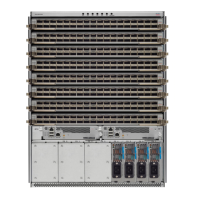5. If the paths have different-length AS paths and the bgp bestpath as-path ignore command is not
configured, then the change cannot be suppressed. Again, the AS path length is calculated using the rules
in Comparing Pairs of Paths, on page 26.
6. If the MED of the paths can be compared and the MEDs are different, then the change cannot be suppressed.
The decision as to whether the MEDs can be compared is exactly the same as the rules in Comparing
Pairs of Paths, on page 26, as is the calculation of the MED value.
7. If all path parameters in Step 1 through Step 6 do not apply, the change can be suppressed.
Administrative Distance
An administrative distance is a rating of the trustworthiness of a routing information source. In general, the
higher the value, the lower the trust rating. For information on specifying the administrative distance for BGP,
see the BGP Commands module of the Routing Command Reference for Cisco NCS 6000 Series Routers
Normally, a route can be learned through more than one protocol. Administrative distance is used to discriminate
between routes learned from more than one protocol. The route with the lowest administrative distance is
installed in the IP routing table. By default, BGP uses the administrative distances shown in Table 3: BGP
Default Administrative Distances, on page 29.
Table 3: BGP Default Administrative Distances
FunctionDefault
Value
Distance
Applied to routes learned from eBGP.20External
Applied to routes learned from iBGP.200Internal
Applied to routes originated by the router.200Local
Distance does not influence the BGP path selection algorithm, but it does influence whether BGP-learned
routes are installed in the IP routing table.
Note
In most cases, when a route is learned through eBGP, it is installed in the IP routing table because of its
distance (20). Sometimes, however, two ASs have an IGP-learned back-door route and an eBGP-learned
route. Their policy might be to use the IGP-learned path as the preferred path and to use the eBGP-learned
path when the IGP path is down. See Figure 2: Back Door Example , on page 30.
Routing Configuration Guide for Cisco NCS 6000 Series Routers, IOS XR Release 6.4.x
29
Implementing BGP
Administrative Distance

